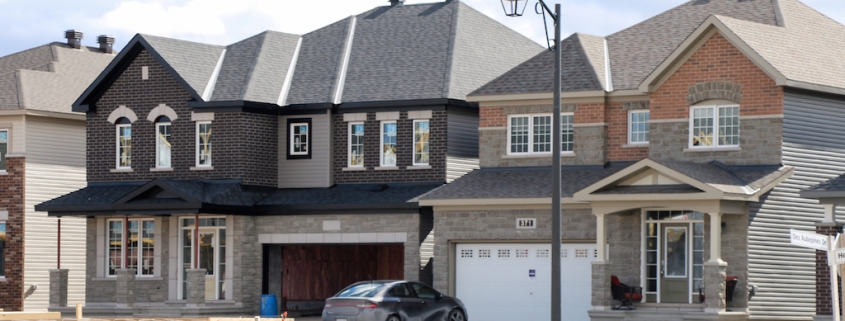Sales activity in Ontario’s existing-home market was slowing last year, but homebuilders weren’t saddled with high levels of new unsold dwellings, suggests a recent report from Central 1 credit union, which predicts the trend will continue.
Across the province, there are 2,112 homes that — despite being finished — have not found buyers. However, that’s down 13.2 percent from the previous year, according to an Ontario Economic Briefing. “We’re well below the long-term average,” Edgard Navarrete, a regional economist with Central 1, tells Livabl in a followup interview. “We’re seeing a slight increase for low-density [homes],” he adds.
While more completed single-family homes remained in builders’ inventories, this was offset by demand for new condo units. Together with row and townhomes, apartments account for 82.7 percent of units currently being built.
“There is no need for concern yet, but it is pointing to a shift in demand from low-rise housing to hi-rise housing due to affordability concerns,” writes Navarrete in the report.
Prices for new homes averaged $834,206 in 2018, up 6.1 percent annually. In 2017, prices surged by 10 percent.
“Even with the moderation in price growth, the average price level is pushing potential homebuyers to the resale market or deciding not to purchase at all,” notes Navarrete.
“This is especially true in the more expensive markets such as Toronto and Ottawa-Gatineau,” he adds.
One result will be a slower pace of new home construction in 2019, Central 1 suggests, anticipating builders will break ground for 71,000 units in Ontario this year, down from 75,956 in 2018.
That’s around the level of construction seen in 2016 and, before that, in 2008 during the recession.
However, Canada Mortgage and Housing Corporation (CMHC) sees factors that are supportive of somewhat of a rebound in single-family home construction, at least for 2019.
“Single-family existing home sales and starts will post a partial recovery in 2019 as better than expected job growth and migration levels encourage buyers to re-enter the market before sales and starts ease further into 2020,” the Crown corporation wrote in a Fall 2018 Housing Market Outlook.
Navarrete notes that some of the pullback in detached home demand stems at least in part from mortgage stress testing.
“It put a lot of people that were willing to buy, that are able to buy, on the sidelines,” he explains. “The people that can still go forward and buy… they tended to go for higher-density options,” he adds.
But looking ahead, Navarrete expects the number of unsold homes in Toronto — and more broadly in Ontario — to continue to trend lower.
“As people save for a downpayment a little bit longer, some of them will be able to take those single-detached homes that are unsold off the market, and also builders will be a little bit more cautious about the number of new projects they bring to the market,” Navarrete notes.









 Maziar Moini, Broker of Record - Home Leader Realty Inc.
300 Richmond St. W., #300, Toronto, ON M5V-1X2
Maziar Moini, Broker of Record - Home Leader Realty Inc.
300 Richmond St. W., #300, Toronto, ON M5V-1X2



